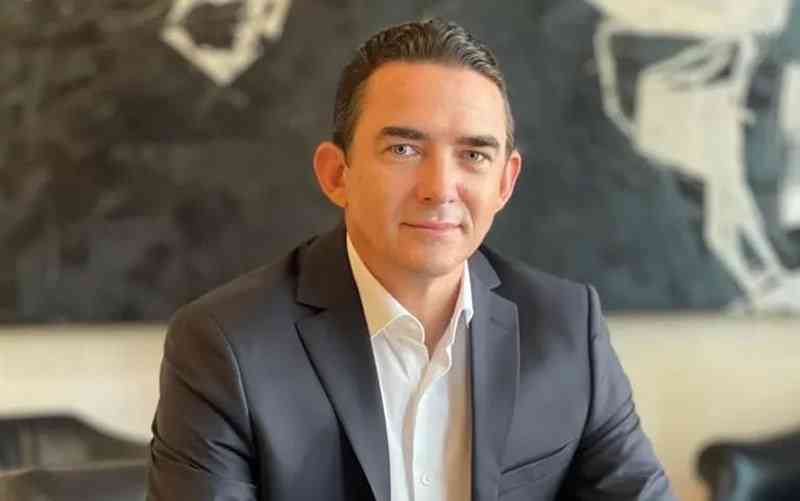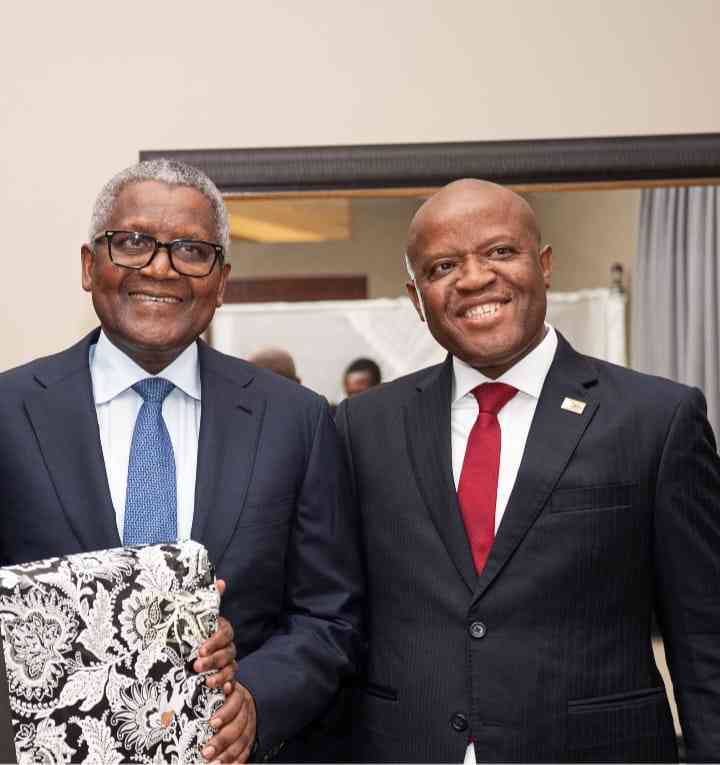
Zimbabwe Independent senior reporter Tatira Zwinoira (TZ) recently spoke to West Properties chief executive officer Ken Sharpe (KS, pictured) on several issues including the country’s property industry. Sharpe is the founder of property investment firm, Augur Investments, and has a joint partnership company with Harare City Council called Sunshine Development (Pvt) Ltd. Below are excerpts of part II of the interview where Sharpe discusses his life as a property mogul and the industry as a whole:
TZ: So, resuming our earlier conversation, I had wanted to find out from you what your vision was for the Zimbabwe property industry and what role your company plays.
KS: No, I think my vision for the properties sector and for the company are linked. Because I have a vision that sees into the future, I am not looking at the Zimbabwe in 2023 or the Zimbabwe in 2024, 2025, I am looking at the Zimbabwe in 2030. It is aligned to our vision, our national vision 2030. Where do we want to go as a society? How are we going to uplift the people to middle class? And if I take our vision, I go beyond 2030. I look into 2050. This corporate strategy that we have to 2050 is to put a billion bricks on the ground by 2050.
TZ: And a major cause of concern has been the development taking place in Harare over wetland (Millennium Park which will have several high-rise apartments, townhouses, and stand-alone residential homes). What is your comment on this?
KS: Look, as I said to the relationship was very acrimonious with the City of Harare. It took us many years to get the land zoned. When we were paid the land for the airport road, it was not zoned appropriately so that question should be directed to them because they are the ones that gave me the land. You know, we will ask them for any land available and that is what they said was available. So we took it in good faith. We did the work on the road. We spent US$20 million. We had to wait a decade to get the land zoned, the change of use. When the change of use was done, then this issue of wetlands came up. A declaration was made. We challenged at the High Court we won. We took it to the Supreme Court, we won.
We actually won three cases against three different ministers of the Environment (Francis) Nhema (former environment and natural resources minister February 2009 to September 2013, and youth development, indigenisation and empowerment minister 2013 to 2014, Saviour Kasukuwere, (former local government, rural development and national housing minister from July 2015 to November 2017, Kasukuwere, who also served as environment minister between September 2013 and July 2015) created, and eventually, Minister (Oppah) Muchinguri-Kashiri (former environment, water and climate minister 2015 to 2018, and now Minister of Defence of Zimbabwe settled with us.
So when we settled, we said, fine, let us protect the wetland core. The wetland itself is dilapidated. There is no more wetland. Let us go there and see, there is no water. A wetland needs water. And there is no water there simply because people know you are drilling boreholes.
There is 10 000s, 100 000s, of boreholes in Harare where people are extracting water because the city failed to give them water. So that is water that is being extracted - my own home in Borrowdale, when I first drilled the hole there 16 years ago, I hit water 22 metres. Today I had to drill to 140 metres, the same plot, the same piece of land to get water.
- Harare cancels Pomona waste deal
- Devolution gains remain a mirage
- Harare cancels Pomona waste deal
- Pomona saga: Harare handed shock US$750k ‘garbage’ bill
Keep Reading
TZ: Okay.
KS: It means it is 120 metres deeper than 16 years ago. The reason is the water table has been driven down further into the ground because people are extracting the water. So, the wetland has disappeared. But, we are responsible developers. Part of our programme or CSR, our commitment to the ecology and to the Environmental Management Agency, was the development agreement that we had with them to enhance the wetlands. So, we will rehabilitate the wetland. We will create a wetland in the middle of Millennium Park. We will create a beautiful park. We will bring in fauna and flora, natural vegetation that should be there. Water features of water, animal life, bird life, that is what we want to see in that environment so people can go outside of their homes, walk into the park and see a beautiful natural habitat.
TZ: Just for our audiences, because I know we talked about it before this interview, which area is that where the wetland is?
KS: So, it's Millennium, Millennium Park in Borrowdale.
TZ: What impact have these reports had on your operations in Zimbabwe?
KS: It has not stopped us. We are not deterred by the ‘nay sayers’ or the negative elements of our society that want to pick on things that are wrong instead of doing things that are right. We believe in following the law. And the law is very clear. In Zimbabwe, we have a development permit. We have an Environmental Impact Assessment (EIA) certificate. We have got the land use appropriately zoned for what we are building, and we are building and we are not stopping. And our customers are supporting us. They are seeing the products we bring into the market.
So yes, there are these negative elements of society. But my question to them is what have you done for your country? We are building Zimbabwe, one brick at a time.
We are putting a billion bricks onto the ground in Zimbabwe, but what have you done for your country? Let us not look at what happened in the past because the past is what we call a 'fait accompli'.
It is already transferred the land to us 14 years ago, it's not going to be transferred. They have tried to challenge us in court several times, they've lost it, so we own the land. The question was not how did we get the land or why did we get the land? The question should rather be what are we going to do on the land? Yes, we've got this resource, how are you going to make that resource better for Zimbabwe? Because, when we got the land, it was an eyesore.
People were dumping rubbish on the land, even to this day. Look at the degradation of the soil in that same wetland you mentioned. There are squatters living now in Millennium Park Borrowdale. Go there and see citizens, and residents, see the people that are digging out the soil from our environment, stealing it and selling it somewhere else taking it away. They are stealing our land, and that should be stopped. That is what we are saying.
Let us create something that is sustainable. Let us create something that is beautiful. Judge me not by the number of times that I fell down, like Nelson Mandela would say, but rather by the number of times that I have gotten up again because yes I have been knocked down many times. Our company has been affected by these things but they are not deterring us. We are getting up stronger every time and every time we know where we are going because we can see the future and we know it is a bright future.
TZ: Right. You mentioned that your company has invested a lot of money. Could you just tell us audience how much you have put into your projects so far?
KS: Look, development is a cycle. So, if we go back to the ownership of the land, how we got it, we had to invest US$20 million into building the road and we got the land for that value of investment we made. So, besides that US$20 million, we have invested at least another US$30 million so you could say US$50 million of capital has been invested into the land. But, the long-term investment is much bigger than that and let me explain why. When you take the land area that we have got, and you look at what has to be done, it is a cycle, right? So, you get the land unzoned, then zone it. You develop it into usable space, appropriate zoning of residential, commercial, retail, sometimes industrial.
We do not have any industrial land but all these land uses give a value to the land that was not there before but the value to the land is still not going to be achieved unless you put capital into servicing the land.
And that is the next step that you have to service the land. So, you put roads, you put sewer, you put storm water drainage, you put connections into the land, and you create a piece of land that has more value than what it had before it was serviced.
We do not stop there. We are saying once we have serviced the land and we have created this value, how do we enhance the value further? And that is why we talk about bringing Dubai to Zimbabwe because we believe the most value that you can achieve is not just building. Anyone can take bricks, not everyone can take a billion bricks, but anyone can take bricks put them in the ground and build something.
TZ: What are the processes?
KS: We know our Zimbabwean methodology of building is over a decade. You know, we start with the foundation, save up money a few years later, build the walls then put up the roof.
You will see people living in a house that does not even have a porch and paint on it but people are living there. That is not how to achieve maximum value.
We believe in creating a complete ecosystem. A community of a lifestyle estate that is gated, that is secure, where we have amenities, where we have facilities, people can play sports, people can enjoy the park, people can go to the shopping mall, and people can go to offices. This is where the concept of ‘live-work-shop-play’ comes from.
TZ: What else do you offer?
KS: Our value proposition is we are creating this lifestyle estate that is adding value.
And when you look at that value, which is what your question was, we are talking about today's value of US$3 billion.
Three billion US dollars is how much a billion bricks equates to in built-up area and that is going to happen by 2050.
Mark my words, by 2050, the value of property in Zimbabwe today at US$3 billion is going to be much higher than US$3 billion, five times or maybe 10 times more. So, we are talking about US$15 to $30 billion of value that we are creating for our nation.











